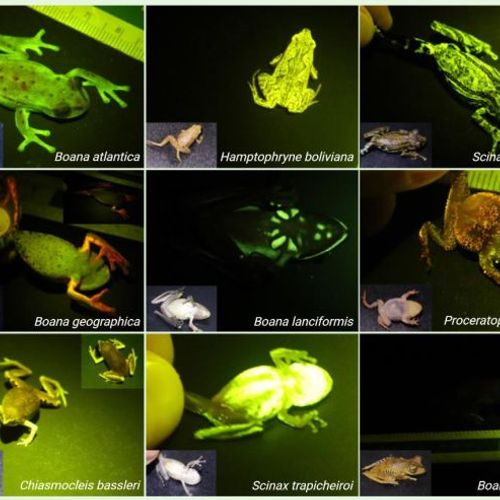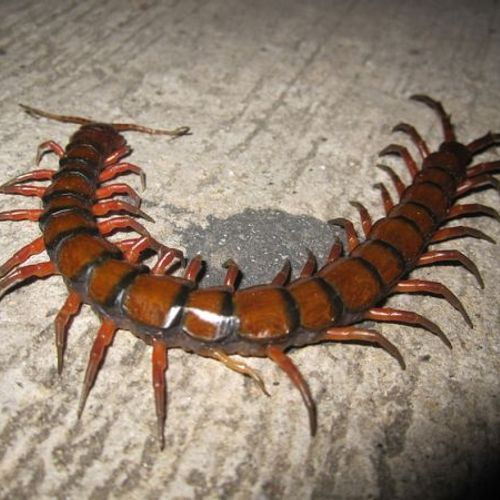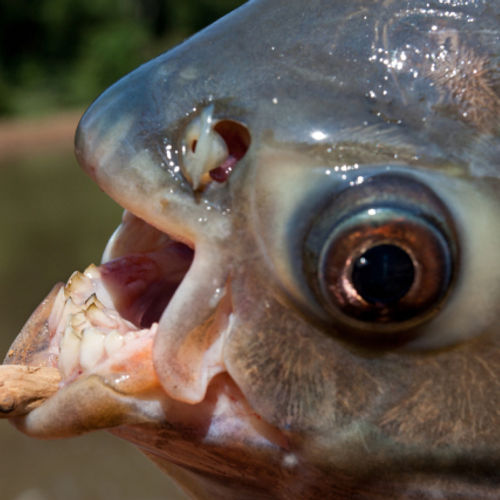
| Added | Wed, 23/08/2023 |
| Источники | |
| Дата публикации | Wed, 23/08/2023
|
| Версии |
In a groundbreaking study, scientists have unveiled an amazing discovery: South American frogs have an amazing ability to glow in the dark. The study was published in the journal bioRxiv
For the first time, this phenomenon, known as biofluorescence, was announced by researchers in 2017. However, a new study has shown that the number of frog species with such fluorescence is much greater than previously thought. During the study, in which 151 species of South American frogs were studied, it was found that all individuals exhibit fluorescence to one degree or another.
A study led by biologist Courtney Whitcher from Florida State University sheds light on the significance of this feature of the glow. The results suggest that biofluorescence is not just a random phenomenon, but rather a vital aspect of the communication and survival strategy of frogs. Witcher explains:
"Our results suggest that the biofluorescence of frogs most likely functions within the framework of anuran communication, which is confirmed by their adjustment to ecology and sensory systems."
To conduct the study, scientists captured and studied 528 frogs across South America. Frogs were exposed to light of various wavelengths - from ultraviolet to visible spectrum - and recorded the resulting fluorescence. Surprisingly, the glow was observed in every frog, although in some it was more pronounced than in others. The researchers found that blue light, similar to natural terrestrial twilight, gives the strongest fluorescence. In addition, fluorescence occurred mainly in two different peaks of visible light - green and orange.
This unique ability of frogs to glow is especially important because it corresponds to their natural behavior. Many species of frogs are nocturnal, that is, they are most active at dusk. Their eyes are specially adapted for optimal functioning in low-light conditions, and they are especially sensitive to green light. The researchers found that those parts of the body that are involved in signaling to other frogs, such as the throat and back, glow most brightly.
This discovery has far-reaching consequences. It not only sheds light on the fascinating world of biofluorescence, but also opens up new opportunities for understanding communication and behavior of frogs. In addition, this study has tripled the number of species tested for the presence of biofluorescence, expanding our knowledge about this unique feature of the animal world.
Scientists and experts expressed their excitement and admiration for this discovery. Dr. David Gruber, a marine biologist and National Geographic researcher, notes:
"This research is revolutionary. It reveals the hidden world of fluorescence in the animal world and highlights the importance of further study of this phenomenon."
The glow of South American frogs adds to the growing list of glowing creatures in nature. Fluorescence has been observed in various species, including cat sharks, chameleons, salamanders, and even Australian monotremes and marsupials. However, the biofluorescence of frogs seems to differ from the biofluorescence of other luminous animals.
While scientists continue to unravel the mysteries of biofluorescence, it is obvious that this discovery opens up new possibilities. The luminous frogs of South America have captured our imagination and deepened our understanding of the natural world.
Новости со схожими версиями
Log in or register to post comments









